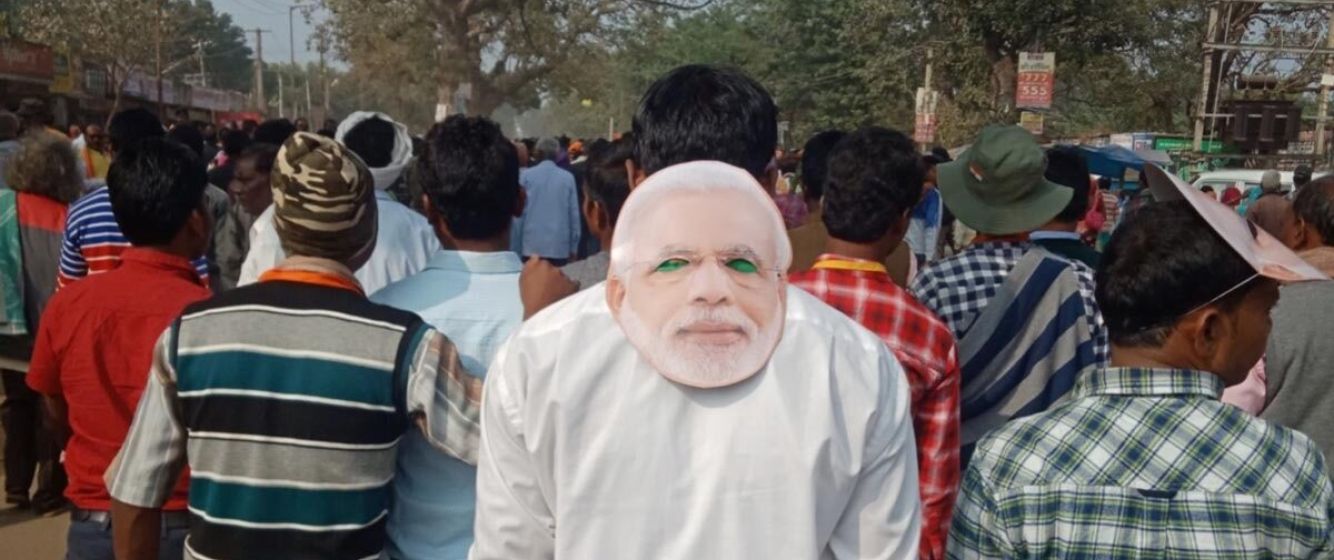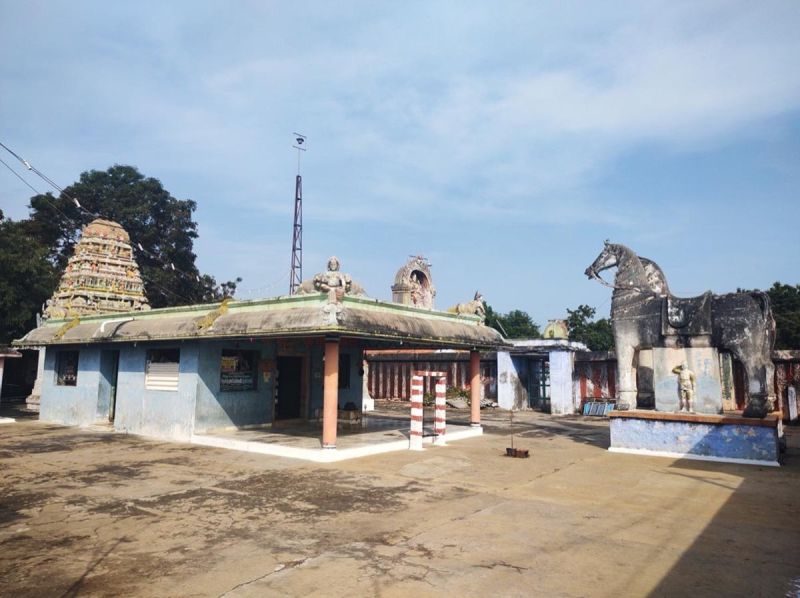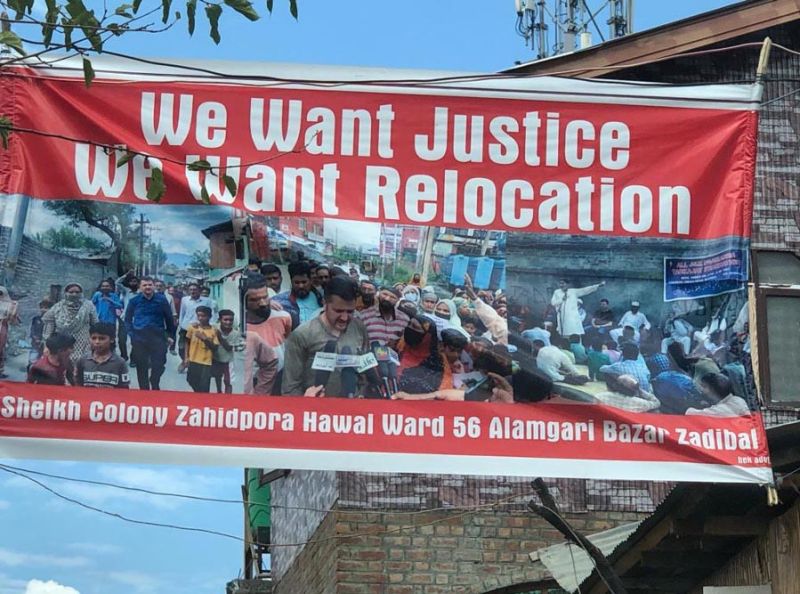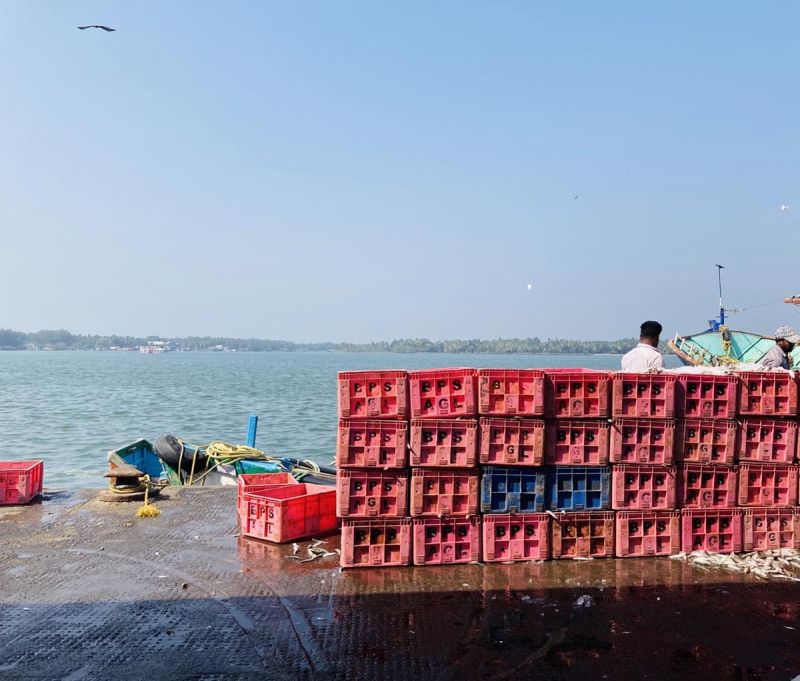
Adivasi youth going to attend Modi’s rally wearing ‘Modi Mask’ in Khunti district of Jharkhand. Photograph by Kunal Shahdeo
Mapping and Interrogating Inequalities - Youth Anxieties and Aspirations in India Today
As part of the 6th edition of the Social Sciences Winter School 2022 organized at Pondicherry University, India from November 28, 2022 to December 2, 2022 which focused on the central theme ‘Rethinking Inequalities’, young researchers discussed, deliberated and presented how inequalities in different forms affect citizens in various domains of their life. Amidst spaces of everyday inequalities and the quest for emancipation, a group of young researchers working on diverse themes worked together to deliberate on issues covering identities, inequalities, access and mobility. One group of researchers engaged with the research method of capturing and narrating life stories and lived experiences to tell stories of individuals/communities that offered accounts of vulnerability, agency and resistance.
Life stories and life experiences are important to understand how people view themselves within particular political, economic and socio-cultural contexts. Such lives and experiences help us to understand how narratives function as expressions of alternative definitions, meanings and forms of resistance (Harrison 2008). Andrews (2002, cited in Harrison 2008) states “narratives and counter-narratives as expressions of alternative definitions, meanings and forms of political challenge and/or resistance”. Focusing on the intersectional aspects of identities and understanding inequalities by collating expert knowledge with experience-based knowledge, the following narratives will engage with life stories of inequalities, anxieties and aspirations from varied field arenas of the young researchers. Traversing from Jharkhand, Kashmir and Tamil Nadu to Kerala and Haryana, these accounts from the field research maps, study and interrogate the interactive and intersectional nature of identities and inequalities.
Youth aspirations and anxieties: The Adivasi turn towards Hindu majoritarianism
The eastern Indian state of Jharkhand has hitherto been the hotbed of Adivasi (indigenous groups) mobilization. The complex political space of Jharkhand, plurality of social movements, the presence of Maoist insurgency and the enduring history of Adivasi identity assertion provide a very tricky socio-political space for Hindu majoritarianism (Hindutva) to gain support among the Adivasis. The strength of the Church and the continued popularity of regional Jharkhandi parties also pose difficulties for the Hindutva brigade. Despite all the obstacles to the growth of majoritarian forces, in recent times Jharkhand has witnessed unprecedented events of religious tension and violence which coincide with the increasing electoral dominance of the Bhartiya Janata Party (BJP) in the region. In fact, according to the Hate Crime Watch, a database of hate crimes maintained by Factchecker, Jharkhand is the second deadliest state in the entire country with 15 reported cases of hate crimes between 2014 -19.
My PhD project aims at providing a historically grounded and socially situated understanding of the growth of Hindu nationalism in Jharkhand. One of the important areas of focus has been the fatal attraction of Hindutva among the Adivasi youth. The Adivasis of Jharkhand have experienced a generational shift; the younger generation occupies a world which is starkly different from their older ones. Education, along with improvement in road connectivity and increasing penetration of market, television and digital media, has created a category of highly aspirational Adivasi youth whose desires could not be entirely subsumed by the earlier politics of Jal, Jangal and Jameen (water, forest and land). As they inhabit new worlds they move in all directions seeking new futures for themselves. Some of them have started to negotiate for a better future within the larger umbrella of Hindu nationalism. The life story of Ramesh Munda, a young Adivasi man from the Khunti district of Jharkhand captures the socio-political complexity of the conjecture when Adivasi youth started to negotiate with Hindu majoritarian forces.
Ramesh (24) is a member of Bhartiya Janata Yuva Morcha (BJYM), the youth wing of the BJP. He dropped out of college in the second year of his bachelor’s degree and moved to the capital city of Ranchi to work as a construction worker for a couple of years. Despite earning some money he was not happy with his work because of the constant abuse he received from the manager of the construction site. In 2018, he returned to his village in Khunti and soon joined BJYM mediated by one of his school friends. In addition to helping his parents in the field, he is mostly moving around Khunti town with his friends doing ‘party work’ for BJYM and BJP.
Ramesh does not want to do the backbreaking work in the fields like his father. He firmly believes that agriculture can only cause pain and agony, but not provide a better future for the younger generation of Adivasi boys. Also, he has little hope from higher education as he points out the number of unemployed graduates in his village. He wants to be in the real estate business and earn money in the booming market near Khunti and believes that his association with BJP would allow him to learn the ways of bade log (big men) and build social networks required for his future plans. He spoke to me proudly about the respect he receives and the sense of power he feels when riding his motorcycle with a BJP flag through the city. He succinctly puts it, “maza aata hai” (it is fun).
Ethnographically grounded stories of Adivasi youth participation in the larger politics of Hindu majoritarianism capture the complexity of the conjecture when the contradiction between increasing aspirations and socio-economic limits to the actualization of those aspirations have created a conducive space for the growth of Hindutva politics among the Adivasis.
Kunal Shahdeo, PhD Scholar, Department of Humanities and Social Sciences, IIT Bombay.
Prioritizing education over religion: Darshan’s voice in the Dalits’ quest for social equality
For long we have assumed spaces to be universal, being ignorant of how spaces continue to remain as the embodiments of discrimination based on caste, class, gender, race and religion. A space such as a temple that is supposed to be open for free and equal access by all, unfortunately, continues to practice caste discrimination. As part of my doctoral research, I have been collecting the perspectives and experiences of Dalits on their attempts to enter and access temples. My doctoral research focuses on the Dalits’ demand for temple entry and religious worship in Tamil Nadu. Caste discrimination against Dalits exists in different spaces – in tea stalls, saloons, burial grounds, community halls, in accessing streets and water resources and also in temples. Temple is supposed to be common and equal for all worshippers/devotees but for the Dalits, forget about worshipping the deities or participating in deity rituals and temple festivals, entering the temple itself is barred in certain temples. Given this context, my doctoral research looks into how the Dalits view the temples and how they seek equality and justice in the temple space. This particular account brings out the viewpoint of a young graduate Dalit man on caste discrimination in the temple space. To Darshan, who considers himself an atheist, gods and temples were created by humans to evoke fear and discipline. He also opines that when access is supposed to be equal for all, how does class and caste-based discrimination creep into temples. He expressed how in village temples, caste identity determined one’s access to the deity and participation in temple rituals and in city temples, wealth determined one’s access to the deity and performance of temple rituals (special deity view tickets and separate queues for VIPs). In both, Darshan says it is the lower caste/class which suffered from denial in religious worship and unequal treatment in the temple.

"Is Temple a public space?"
Dhivya Sivaramane
A wealthy high caste person gets the privilege of viewing the deity closely and getting first preference in performing deity rituals which accentuates their socio-economic status. Such people he says are using temples as symbols of their caste and wealth and questioned how such people fail to use their money for better purposes such as building schools. Darshan smiles and says that this does not happen because in temples one can parade one’s caste pride whereas, in schools, one cannot. On being asked how he, as a young Dalit man, sees the Dalit's civil rights struggles in accessing education, employment and temples, Darshan replies spot on – he will prioritize education and employment over temples. He states that it is his education and employment that will help him grow and prosper and not his divine beliefs or religious inclinations. However Darshan adds that in a place such as a temple, where Dalits are denied access, we must raise our voice against caste discrimination, but our religious assertion itself should not define us, and at least to me, I would like to be known for my educational progress. Praying or worshiping is not his immediate concern and he has been particularly anxious about his studies further and his job prospects. To be known based on one’s education, Darshan says, will break one’s identification based on caste. Darshan observes how getting equal access to the temple alone will not equalize Dalits’ living/interactional space with others but education has the power to do so and that is where he will focus his efforts on. The more we are educated, Darshan states, the more we will be empowered to question casteist behaviour in all such spaces and break the caste barriers. God and religion, Darshan says, have not been successful in civilizing people, but education will and it can.
Dhivya Sivaramane, PhD Scholar, Department of Political Science, University of Delhi.
Aspirations and anxieties: Stories of caste marginalisation in Kashmir
The stories below are part of my larger research on caste and social exclusion among Muslims in Kashmir. They emanate from the fieldwork conducted in Kashmir with people belonging to marginalised caste communities, such as Sheikhs and Hanjis.
In a border town, Baramulla, in Kashmir, I met a sixteen year old boy, Rasheed belonging to the Sheikh community, on the fractured and dilapidated lanes of a ghettoised colony. Sheikhs are the Dalits of Kashmir, facing overlapping layers of socio-economic and cultural deprivation. The Sheikh community are severely confronted by a lack of economic opportunities and the necessary infrastructural and bureaucratic support. Earlier known as Wattals, which is also used as a caste slur, the surname Sheikh embodies upward mobility. Rasheed was a school dropout because he suffered through a discriminatory pedagogic space where his body was not seen as authentic enough to exist. Rasheed articulated his capacity to aspire through an economic vocabulary, where an economic means to a dignified life upheld dignity and meaning. His aspirations sought an immediate economic recourse that could offer him and his family a sustainable means of income. Rasheed’s parents work as Safai Karamcharis (sanitation workers) at the municipality, and demand institutionalization of sweeping jobs for the Sheikh community. It is seen as a way to access formal employment. However, Rasheed does not resonate with such aspirations. He wants to take a loan, buy an auto rickshaw and drive that. His anxieties rested on a stringent reminder of textual Islamic egalitarianism, where he is equal to all other Muslims despite his caste and class identity. Rasheed reminded me that despite their community being the cleaners of Kashmir, the society does not extend the much-deserved respect to the Sanitation Workers,
“Are we not Muslims? We are all equal in the eyes of Allah, and we clean the society, yet should we be discriminated against like this?”
Mohammad Shaban narrates similar anxieties and aspirations. He is 35 years old and has been working as a sanitation worker with the Srinagar Municipal Corporation (SMC) for 8 years. His political articulation is vehement, as he aspires for a collective organisation that caters to the upliftment of the Sheikh community in Kashmir. The infrastructural support to build such an organisation is lacking, and his co-workers at SMC are not equally enthusiastic about initiating such a state-level venture. For Shaban, an umbrella organisation will serve to forward the cause of sanitation workers as well as their families. Shaban ensured that his children receive religious education and learn the Quran. He feels religious awareness is one of the ways by which the Sheikh community will be uplifted. For Shaban, being aware of one’s rights and sensitising society about their religious duty toward each other is a holistic approach to seeking moral equality. While the elder members around Shaban espouse institutionalization of sweeping jobs for their children, Shaban does not agree with such a practice. He is educating his children and aspires for them to work in ‘respectable jobs’. Shaban told me,
“My children will work in respectable jobs, and I will make sure that they are so well-educated, that they eventually contribute to the upliftment of their community (Sheikh community).”

Demand for social justice in Kashmir.
Hafsa Sayeed
In yet another district Bandipora by the banks of Wular, is a village where Hanjis live. Hanjis are a marginalised community as well and are the fishmongers of Kashmir. They used to traditionally live in boats, and believe that they are the descendants of Noah. I met a girl there in the ghettoised village, Rubeena, who had completed her Bachelor's from the District College. Her aspirations are reflected through her endeavours of imparting education to the children of her community in the village. Rubeena constantly navigated her anxieties on the borders of the caste, class and spatial identity that defined her. She told me,
“If a Hanji family gains upward mobility, and are educated, yet while searching for a match for marriage, most families find it difficult to overlook the caste identity.”
Hafsa Sayeed, PhD Scholar, Department of Humanities and Social Sciences, IIT Bombay.
Sense and segregation in coastal Kerala: Narratives of changing times
“My father used to mock my mother for having a strong fish smell. He does not miss any chance to humiliate her. However, the intriguing part is that my father eats food that my mother cooks, although my father disdains my mother, her cooking, and her fish ‘stench'.” Nahla started narrating her account related to the fish's ‘stench'.
Nahla is currently doing her graduation. She and her younger sister, Nadia, are on the mother's side. They are not fond of their father. He works abroad and constantly engages in a fight with Nafeesa, the mother of two. Nadia and her family belong to a small coastal village in Kerala, India. However, they are not engaged in fishing.
Nadia nodded approvingly to the narration of Nahla and further added that 'she loves her mother more, especially when she smells fish.' The story of Nadia and Nahla is fascinating, and it provides an entirely different narrative. It warrants further pondering. It challenges the famous narration of fish stench, in which smell is considered unclean and not something that everyone proudly owns. Contrary to popular imagination and discourse, Nadia loves her mother more when she smells fish. They own the smell of fish.

A scene from a fishing village in Kerala.
Shahdab Perumal
Her father constantly wants to detach from the fish stench and be part of the Gulf smell. It is a claim of Izzat. The father's accusation that his wife carries fish' stench' partly comes from his masculine pride. More clearly, having a pleasant-smelling woman as a homemaker with an erotic effect on oneself is a mark of masculine pride. The narration of the fish stench is very complex. It is also inextricably linked with gender, class, mobility, and aspiration.
Interestingly, Fish ‘stench,’ in a sense, is a matter of contingent. It is not coming from absences or a vacuum, but it is felt and smelled in relation to others. Here the fish stench is felt in relation to the gulf smell. It is very intriguing to note that coastal areas in Kerala lay at the ‘margins’ of otherwise ‘developed’ society. Here fish ‘stench’ represents a marginal smell. Belonging to a marginal space also means coastal people are associated with a lower sense of smell and are devoid of any ‘sight.’
Shahdab Perumal, PhD candidate in the Department of Social Work, University of Delhi.
Female labour force Participation: field narrative from Haryana
Various aspects of socio-economic development in India warrant higher female labour force participation. India is not only experiencing a sizable decline in fertility rates reducing female time spent on child care but also experiencing a rapid decline in the gender gap in education preparing more females for the labour market. Given this, it is difficult to understand the low rate of female labour force participation in one of the youngest countries in the world. In this regard, a primary survey based on the urban population of Haryana was conducted whereby a heterogeneous sample of respondents is chosen via a multi-stage systematic random sampling method. The data collected by means of a structured, thematically organized and pre-coded questionnaire portrays qualitative as well as quantitative insights pertaining to the respondents. The broad findings followed by a specific case study are discussed further. The survey of Haryana highlighted major issues like caste, religion, sectoral disparities, patriarchal norms and so on that affect the female labour force participation thereby impacting her decision towards work. The findings show inequalities not only in terms of access to socioeconomic parameters but also in terms of data that is available at the international and national levels. E.g., The number of hours of work shown in secondary data is contradictory to the field observations. Several women were not even aware of the kind of work they do on a daily basis, a time-use survey enabled understanding of the same.
In this regard, a life story of an unemployed woman with a matriculation degree in Faridabad shows the difficulties she has to face daily. She is 23 years old and a mother to 3 children yet aspires to attain an education so as to get a better standard of living and a future for her children. Her motivation comes from living in a slum area near a hospital. With a bout of anxiety surrounding her future, she still aspires to become a doctor. Given the financial constraints and job insecurity, she is also ready to settle for working as a nurse. Given her past experience, the work that she would actually get is what concerns her the most. Also belonging to the lower caste group, she has worked as a household helper, hotel/restaurant cleaning staff and sometimes as a construction worker, she has faced discrimination on several grounds like separation of utensils, banned entry to the kitchen and so on. She has now separated from her husband who married another woman while working as a casual worker in Kerala and refuses to repay the dowry that he took in his first marriage. She still aspires for a good future despite the plurality of structural constraints that try to clamp down on her capacity to aspire.
Ujjwala Singh, PhD Scholar, Department of Economics, Center for Research in Rural and Industrial Development, Panjab University.
Rethinking our understanding of inequalities
The life narratives of anxieties and aspirations expressed by Ramesh, Darshan, Rasheed, Shaban & Rubeena, Nadia & Nehla and Sonam provoke us to rethink our understandings of inequalities based on tribal, caste, ethnic, class, religious and gender identities. Inequality had been studied from a plurality of methods and disciplinary paradigms. For instance, an economic understanding of inequality points to the broader picture of inequality through trends and numbers. However, in most studies, the experience of inequality of individuals/communities situated at a certain socio-political moment gets invisibilized, hidden and forgotten. In this context, we must look into how these life stories help us to visibilize the experiences of inequalities in all their complexities. A description of life stories tells us how inequalities experienced by individuals/communities point to the need of addressing the ‘politics of recognition’ as put forth by the theoretician of social justice – Nancy Fraser. Each of these stories of inequality, anxiety and aspiration is also a quest for recognition and emancipation and it is important to understand how recognition paves way for redistribution and representation. The life stories leave us all with a question to ponder over – how are the state, the economy and the society responding to such expressions of inequalities?
References:
Harrison, Barbara. Life Story Research - Volume 1. New Delhi: Sage Publications, 2008.
For more information go to: https://winterspy.hypotheses.org/themes/rethinking-inequalities/workshop-3-py